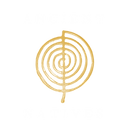Journeying with Rhythm: The Power of Shamanic Drumming | Shamanic Healing in London
- Kymberley McEnhill
- Sep 25
- 3 min read
Updated: Oct 2

Drumming and Shamanic Healing in London
Since time immemorial, humans have used rhythm, drumming, and percussion as tools for altered states, healing, connection to spirit, and community. In shamanic traditions around the world, the drum is often called the “horse of the shaman”, a vehicle that carries them into non‑ordinary reality, bridging this world and the unseen.
In this post I’ll explore the meaning, practice, and potential of shamanic drumming, share tips for getting started (or deepening your practice), and suggest a selection of drums you can browse
What Is Shamanic Drumming?
Shamanic drumming is not “music” in the conventional sense. Its primary purpose is functional: to support trance, journeying, healing, and communication with spirit. The repetitive beat helps shift brainwave states, calm the ego, and maintain rhythmical stability so the practitioner can relax inward and travel.
Many protocols use a steady tempo of approximately 4 to 7 beats per second (often around 5 Hz), which falls into the theta brainwave range, conducive to deep meditative and trance states.
The structure is typically:
Begin slowly,
Hold the steady pulse,
Optionally increase or maintain,
Then bring a “callback” rhythm or slowing to return consciousness.
Drumming circles or communal journeys can deepen one’s practice, build trust with helping spirits, and create a shared energetic container.
Benefits & Considerations
Many practitioners report benefits such as stress relief, enhanced meditation, emotional release, and spiritual insights. Some traditions even use drumming for soul retrieval, energetic clearing, or connecting with animal/plant spirit allies.
But it’s not without precautions:
Use the steady rhythm responsibly, avoid overextending one’s capacity for trance or dissociation.
Always ground and reorient gently (via the callback or slowing).
Keep intention clear and remain respectful of boundaries.
Avoid drumming when extremely fatigued, intoxicated, or psychologically unstable.
How To Practice (A Simple Protocol)
Here’s a basic guideline you can adapt:
Set your intention. Decide which “world” you will journey to (Lower, Upper, or Middle) or which helper you seek.
Find a quiet, comfortable space. Dim light, minimal distraction, comfortable posture.
Begin drumming. Start at a steady, moderate pace (around 4–5 beats/s).
Breathe naturally. Let the body and rhythm sync.
Journey. Allow images, sensations, or guidance to come. Don’t force; follow what arises.
Callback. After your set time or when ready, slow the drumming or shift to a callback pattern to anchor you back.
Journal. Immediately record impressions, images, messages, subtle shifts.
Over time, you’ll refine timing, rhythm, and relationship with your drum and helping spirits. Ancient Natives provide Shamanic Healing in London and can help you with any questions.
Choosing a Drum: What to Look For
When selecting a shamanic drum, consider:
Frame size / diameter - larger drums produce deeper resonance, smaller ones are more portable
Drum head material - traditional skins (goat, deer, buffalo) or modern vegan options
Frame wood & construction - durability, resonance, weight
Comfort & ergonomics - rope handles, mallet fit, grip
Tuning & responsiveness - how tight or loose the head is, how responsive it is to your touch
Below are some examples.
AMI 11-Inch Authentic Ghanaian Djembe Drum with Beautiful Hand Carvings
Large 40cm Shamanic Vegan Drum with wooden beater, Percussion Instrument with deep resonant tone
Shamanic Hand Drum With Beater, Shaman Drum for Adults - Handmade Vegan
Shaman Drum Spirit Music Shamanic Drum with Rope Handles and Mallets
Tips for Deepening Your Practice
Drum regularly - consistency builds rapport with spirit and strengthens your “muscle” for journeying.
Start with shorter sessions and gradually extend.
Explore drumming circles (in person or online) to share energy and experiences.
Combine drumming with meditation, breathwork, or visualization.
Respect rest: integration periods are as important as active work.
This blog post contains affiliate marketing links.
.png)



Comments